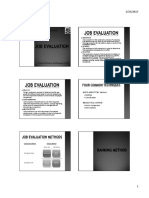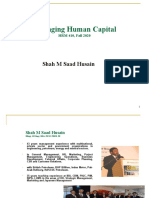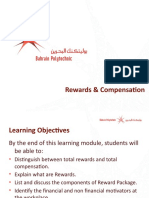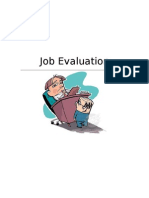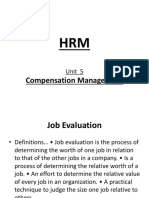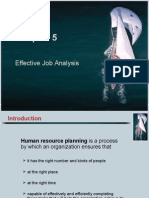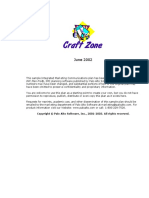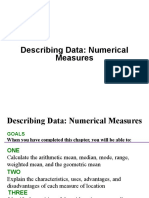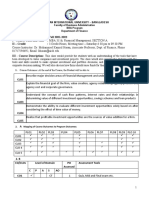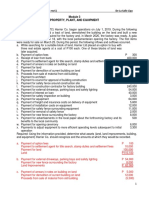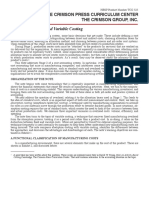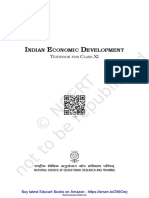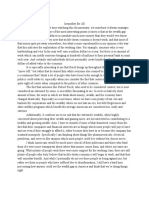0% found this document useful (0 votes)
131 views14 pagesHuman Resource Planning Is A Process: by Which An Organization Ensures That
The document discusses the importance of human resource planning and job analysis for an organization. It states that HR planning must ensure the organization has the right number and type of employees with the right skills at the right time to achieve its strategic goals. Effective job analysis defines job duties and requirements and provides the basis for job descriptions, specifications, and compensation. It is the starting point for many HR activities like recruiting, selection, training and performance management.
Uploaded by
Niaz AhmedCopyright
© © All Rights Reserved
We take content rights seriously. If you suspect this is your content, claim it here.
Available Formats
Download as PPT, PDF, TXT or read online on Scribd
0% found this document useful (0 votes)
131 views14 pagesHuman Resource Planning Is A Process: by Which An Organization Ensures That
The document discusses the importance of human resource planning and job analysis for an organization. It states that HR planning must ensure the organization has the right number and type of employees with the right skills at the right time to achieve its strategic goals. Effective job analysis defines job duties and requirements and provides the basis for job descriptions, specifications, and compensation. It is the starting point for many HR activities like recruiting, selection, training and performance management.
Uploaded by
Niaz AhmedCopyright
© © All Rights Reserved
We take content rights seriously. If you suspect this is your content, claim it here.
Available Formats
Download as PPT, PDF, TXT or read online on Scribd
/ 14





